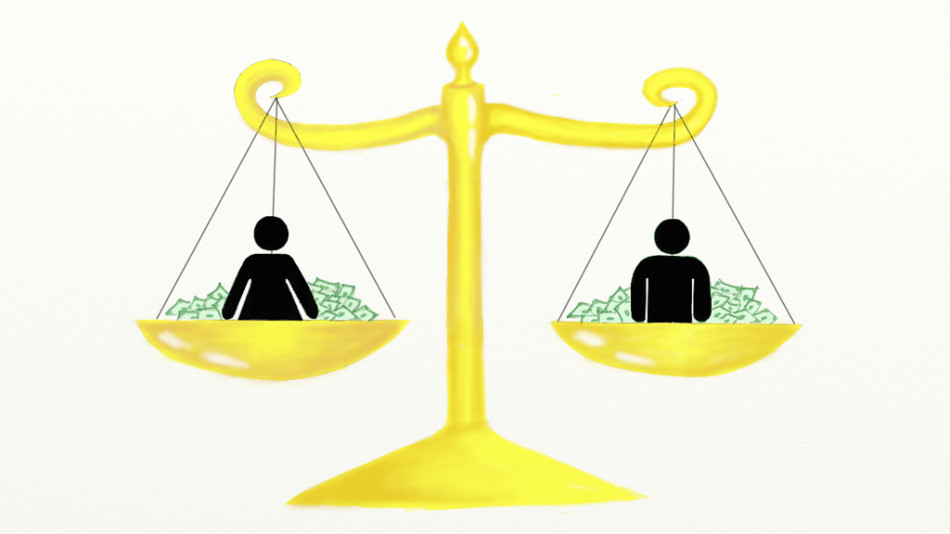Senate Republicans are still the biggest obstacle to income equality
April 16, 2014
Anything men can do, women can do better?
“No you can’t,” say Republicans.
The battle over equal pay for women rages on between Democrats and Republicans, which in itself shows, that as a society we truly have not yet advanced enough from our sexist past.
On April 8, the President signed an executive order, which prohibits retaliation by federal contractors against workers who discuss their pay, lifting the restrictions that keep too many workers in the dark — preventing them from advocating for fair and equal pay. He also signed a presidential memorandum directing the Department of Labor Secretary to issue new regulations collecting summary pay data from federal contractors.
Collectively, these two actions will enhance pay transparency and give workers and investigators the tools they need to identify and remedy discrimination.
On April 9, Senate Republicans blocked legislation for the third time, saying that: given the existing anti-discrimination laws, the legislation is redundant and is a transparent attempt by Democrats to distract from President Obama’s much-criticized health care law and to press what they see as their electoral advantage among women in the upcoming mid-term elections.
Democrats fell short of the 60 votes needed to prevent a filibuster and advance the legislation.
According to The Huffington Post from April 9, Senator Harry Reid of Nevada, the majority leader in the floor speech said, “Are (Republicans) so repulsed by equal pay for hardworking women that they’ll obstruct equal pay for equal work?”
“I’m at a loss as to why anyone would decline to debate this important issue,” Reid said.
In 1963, President John F. Kennedy signed the Fair Pay Act into Law, since women in that year were earning only 59 cents to the dollar compared to men.
Half a century later, that amount has risen to 77 cents on the dollar — a mere 18 cent increase.
The issue faced here is entirely relevant to the current generation, but it is a struggle that started off as a war against women thousands of years ago.
Over time women everywhere, were ranked down to a level of lesser value and importance by an ever increasingly patriarchal society of men.
In 1873, Harvard gynecologist and author of “Sex in Education,” Edward H. Clarke wrote: “Women who went to college risked neuralgia, uterine disease, hysteria, and other derangements of the nervous system, such as infertility.” He went on to explain that a woman’s system never does two things well at the same time.
How is this type of attitude towards women relevant in our society today?
According to the Department of Labor and the Bureau of Statistics, women make up almost 50 percent of all workers in the United States, yet they earn 23 cents less than their male counterparts for the same work. This gap results in hundreds of thousands of dollars in lost wages over a career.
For African-American women, Latina women and women with disabilities, the pay gap is even greater.
Women-owned businesses account for 30 percent of all businesses in the U.S and contribute 1.8 trillion dollars to the economy, yet they are the most underrepresented group in today’s labor market.
One of the biggest obstacles to combating pay discrimination is that so many women do not know they are being underpaid due to discrimination. This is where Obama’s executive order would come in if it were allowed to be enforced.
Republicans fail to understand that when every single one of their party members vote against equal pay for equal work, it not only hurts their chances in the mid-term elections, but it hurts families and individuals all across the country as well.
The recent economic down-turn created an ideal atmosphere for women to step up and bring their families out of poverty, by making up the majority of households where the woman is the sole earner. However if she is earning less than her male counterpart for the same job, the cycle of poverty becomes almost impossible to break.
According to the National Center for Education Statistics, women make up approximately 57 percent of all college enrollment in the country, which will also increase their presence in the labor market — bringing them in direct competition with men.
As college students are getting ready to join the workforce after graduation, it is of the utmost importance to recognize the challenges women will face without the opportunity of equal pay for equal work.
It is the responsibility of the current generation to help close the pay gap and allow for pay transparency by standing up for equal rights and voicing the demand of those rights to legislators.






































































